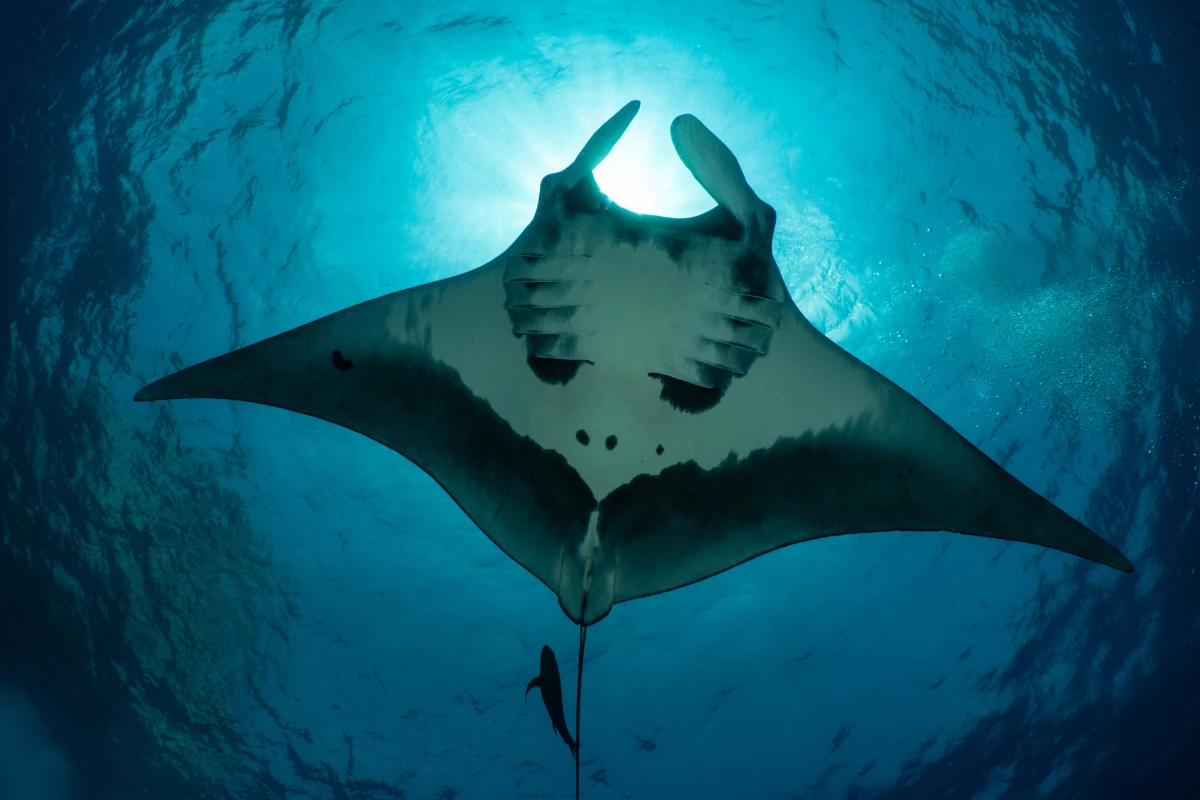Researchers have discovered that oceanic manta rays, specifically the species Mobula birostris, are capable of diving to depths exceeding 1,200 meters (approximately 0.75 miles). This behavior, observed off the coasts of New Zealand, Peru, and Indonesia, is not primarily for feeding or escaping predators, but rather serves as a unique method for navigation in the open ocean.
An international team of scientists conducted a study that involved tagging 24 manta rays across three different locations. The research provided valuable data over a span of 2,705 tag-days. High-frequency data was collected every 15 seconds from eight tags, while the remaining sixteen transmitted summary data via satellite. Notably, on 79 days, the manta rays reached depths greater than 1,200 meters, with a maximum recorded dive of 1,250 meters (around 0.78 miles).
New Insights into Manta Ray Behavior
The study’s lead author, Dr. Calvin Beale, who completed his PhD at Murdoch University, highlighted the significance of these findings. “We show that, far offshore, oceanic manta rays are capable of diving to depths greater than 1,200 meters, far deeper than previously thought,” he stated. The researchers noted that after these extreme dives, mantas often traveled long distances, sometimes up to 200 kilometers (approximately 124 miles), which indicates a strong link between the dives and subsequent horizontal movement.
Upon transitioning from continental shelf waters to deeper ocean territories, each manta ray executed its first extreme dive within just a day. This behavior suggests that these dives are not for hunting or evasion, as the mantas descended in a gradual, stepped manner and spent minimal time at the maximum depth.
Navigational Strategies in the Open Ocean
The research posits that oceanic manta rays may utilize natural environmental cues, such as changes in magnetic field strength, oxygen concentration, temperature, and light, to navigate effectively. “By diving down and ‘sampling’ these signals, they could build a mental map that helps them navigate across vast, featureless stretches of open ocean,” explained Beale.
Dr. Mark Erdmann, Shark Conservation Director at Re:wild and a co-author of the study, emphasized that the deep dives are particularly relevant during the mantas’ northward migration from New Zealand. “The study shows that immediately after deep dives, NZ oceanic mantas spend a fair bit of time warming up on the surface, likely recovering from the thermal stress of these very cold deep waters,” he noted.
The researchers believe that the stability of the deeper ocean environment allows the mantas to recalibrate their navigational maps, a crucial adaptation for their extensive migratory patterns.
While the study involved a limited sample size, it sheds light on the behaviors of these endangered species and their reliance on diverse habitats. The findings underline the importance of international cooperation for the conservation of migratory species, which depend on both coastal and offshore environments.
“Our study highlights how dependent migratory species are on both coastal and offshore habitats, stressing the need for international cooperation in their conservation,” concluded Beale. Published in the journal Frontiers in Marine Science, this research adds to the growing body of knowledge about the mysterious lives of oceanic manta rays and their navigation in the vast, largely unexplored depths of the ocean.
